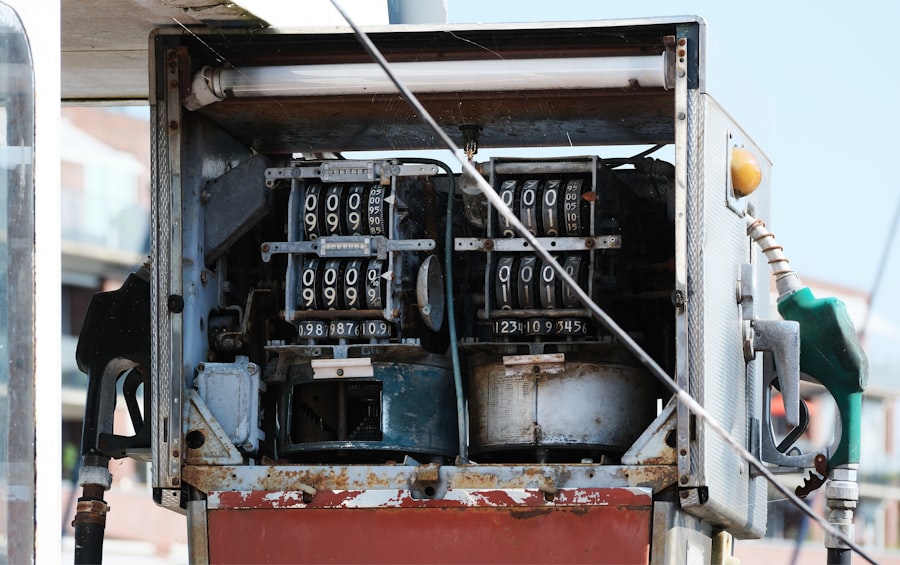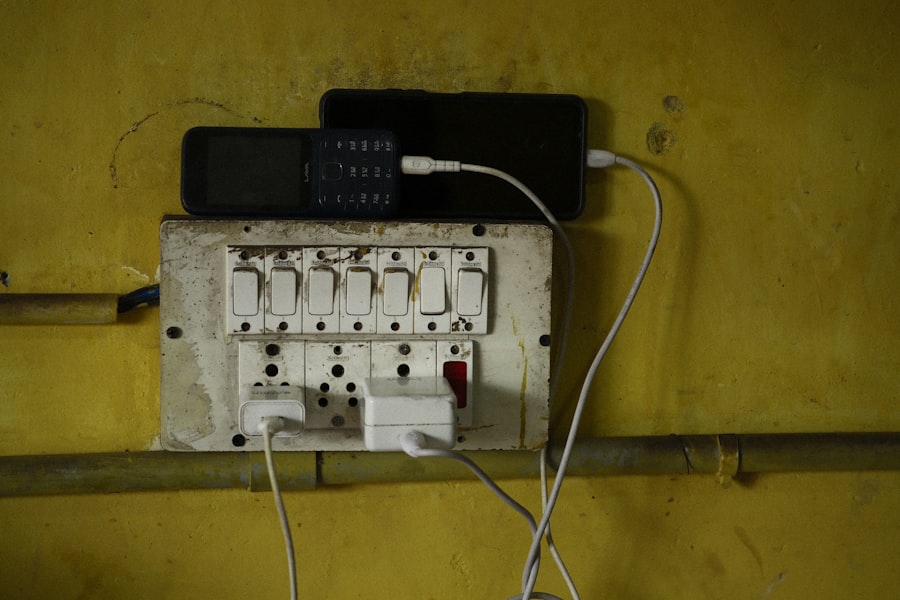In today’s digital landscape, the security of web hosting control panels like CyberPanel cannot be overstated. As I navigate through the complexities of managing websites and servers, I realize that the control panel serves as the gateway to my online assets. If compromised, it could lead to unauthorized access, data breaches, and potentially catastrophic consequences for my business.
The importance of securing access to CyberPanel is paramount, as it not only protects sensitive information but also ensures the integrity and availability of my services. The implications of a security breach extend beyond immediate financial loss; they can tarnish my reputation and erode the trust of my clients. I have come to understand that securing CyberPanel is not merely a technical requirement but a fundamental aspect of responsible digital stewardship.
By prioritizing security measures, I can safeguard my online presence and maintain a robust defense against the ever-evolving threats posed by cybercriminals. This awareness drives me to implement best practices that fortify my control panel against potential attacks.
Key Takeaways
- Securing CyberPanel control panel access is crucial for protecting sensitive data and preventing unauthorized access to server settings and configurations.
- Implementing strong password policies, such as using complex and unique passwords, can significantly enhance the security of CyberPanel access.
- Enabling two-factor authentication adds an extra layer of security by requiring a second form of verification, such as a code from a mobile device, in addition to the password.
- Utilizing IP whitelisting for access control allows only specified IP addresses to access the CyberPanel, reducing the risk of unauthorized access from unknown locations.
- Regularly updating CyberPanel and server software is essential for patching security vulnerabilities and ensuring that the system is equipped with the latest security features.
Implementing Strong Password Policies
One of the first lines of defense in securing my CyberPanel access is the implementation of strong password policies. I have learned that weak passwords are often the easiest targets for attackers, who can exploit them using various methods such as brute force attacks or social engineering tactics. To mitigate this risk, I ensure that my passwords are complex, incorporating a mix of uppercase and lowercase letters, numbers, and special characters.
Additionally, I avoid using easily guessable information, such as birthdays or common words, which could be easily deduced by someone with malicious intent. Moreover, I recognize the importance of regularly updating my passwords. By changing them periodically, I reduce the likelihood of unauthorized access over time.
I also encourage anyone with access to my CyberPanel to adopt similar practices, fostering a culture of security awareness within my team. By establishing a strong password policy, I not only protect my own access but also contribute to the overall security posture of my organization.
Enabling Two-Factor Authentication

In my quest for enhanced security, enabling two-factor authentication (2FA) has become a non-negotiable step in securing my CyberPanel access. 2FA adds an additional layer of protection by requiring not only a password but also a second form of verification, typically a code sent to my mobile device or generated by an authentication app. This means that even if someone were to obtain my password, they would still be unable to access my account without the second factor.
The implementation of 2FA has significantly bolstered my confidence in the security of my CyberPanel. It acts as a formidable barrier against unauthorized access attempts, making it exponentially more difficult for attackers to succeed. I appreciate how this simple yet effective measure can deter potential threats and provide me with peace of mind as I manage my online assets.
As I continue to prioritize security, I encourage others in my network to adopt 2FA as well, recognizing its critical role in safeguarding sensitive information.
Utilizing IP Whitelisting for Access Control
Another effective strategy I have adopted is IP whitelisting for access control to my CyberPanel. By restricting access to specific IP addresses, I can significantly reduce the attack surface and minimize the risk of unauthorized access. This approach allows me to define a list of trusted IP addresses that are permitted to connect to my control panel while blocking all other attempts.
It’s a straightforward yet powerful method that enhances security by ensuring that only known entities can interact with my system. Implementing IP whitelisting requires careful consideration and planning on my part. I must ensure that I include all necessary IP addresses, especially if I or my team members work from multiple locations or use dynamic IP addresses.
However, the effort is well worth it; by limiting access in this manner, I create a more secure environment for managing my web hosting services. This proactive measure not only protects against external threats but also reinforces my commitment to maintaining a secure online presence.
Regularly Updating CyberPanel and Server Software
Keeping my CyberPanel and server software up to date is another critical aspect of maintaining security. Software updates often include patches for vulnerabilities that could be exploited by attackers. By neglecting these updates, I leave my system open to potential threats that could compromise its integrity.
Therefore, I make it a priority to regularly check for updates and apply them promptly. In addition to enhancing security, updating software can also improve performance and introduce new features that enhance functionality. I have found that staying current with updates not only protects me from known vulnerabilities but also allows me to take advantage of advancements in technology.
This proactive approach ensures that my CyberPanel remains resilient against emerging threats while providing me with the tools necessary to effectively manage my web hosting environment.
Monitoring and Logging Access Attempts

Monitoring and logging access attempts is an essential practice that I have integrated into my security strategy for CyberPanel. By keeping track of who accesses my control panel and when, I can identify any suspicious activity or unauthorized attempts to gain entry. This level of vigilance allows me to respond quickly to potential threats and take appropriate action before any damage occurs.
I utilize various tools and techniques to monitor access logs effectively. By analyzing patterns in login attempts, I can detect anomalies that may indicate an attempted breach. For instance, if I notice multiple failed login attempts from an unfamiliar IP address, it raises a red flag that prompts me to investigate further.
This proactive monitoring not only enhances security but also provides valuable insights into user behavior and potential vulnerabilities within my system.
Limiting User Access and Privileges
As I manage my CyberPanel, I recognize the importance of limiting user access and privileges based on individual roles and responsibilities. Not everyone requires full administrative access; therefore, I carefully assess each user’s needs and assign permissions accordingly. By implementing the principle of least privilege, I minimize the risk of accidental or intentional misuse of sensitive information or system settings.
This approach not only enhances security but also fosters accountability among users. When individuals are aware that their actions are monitored and that they have limited access based on their roles, they are more likely to adhere to security protocols and best practices. By creating a structured environment where access is granted judiciously, I can maintain better control over my CyberPanel while reducing the likelihood of security breaches.
Conducting Regular Security Audits and Penetration Testing
Finally, conducting regular security audits and penetration testing has become an integral part of my cybersecurity strategy for CyberPanel. These assessments allow me to identify vulnerabilities within my system before they can be exploited by malicious actors. By simulating real-world attacks through penetration testing, I gain valuable insights into potential weaknesses in my defenses.
The results of these audits inform me about areas that require improvement or additional safeguards. They serve as a wake-up call, highlighting the importance of continuous vigilance in an ever-evolving threat landscape. By committing to regular security assessments, I not only enhance the resilience of my CyberPanel but also demonstrate a proactive approach to cybersecurity that instills confidence in my clients and stakeholders.
In conclusion, securing access to CyberPanel is a multifaceted endeavor that requires diligence and commitment. From implementing strong password policies and enabling two-factor authentication to utilizing IP whitelisting and conducting regular audits, each measure plays a vital role in fortifying my defenses against cyber threats. As I continue on this journey, I remain dedicated to staying informed about emerging risks and adapting my strategies accordingly, ensuring that my online presence remains secure in an increasingly complex digital world.
When it comes to enhancing the security of your CyberPanel control panel, it’s crucial to implement best practices to protect your server from unauthorized access. A related article that might be of interest is about sending emails using CyberPanel, which can be found here. This article provides insights into configuring email settings securely, which is an essential aspect of maintaining overall server security. By understanding how to properly set up and secure email functionalities, you can further safeguard your CyberPanel environment against potential threats.
FAQs
What is CyberPanel Control Panel?
CyberPanel is a web hosting control panel that allows users to manage their web hosting environment through a web-based interface.
Why is securing CyberPanel Control Panel access important?
Securing CyberPanel Control Panel access is important to prevent unauthorized access to sensitive data, protect against cyber attacks, and ensure the overall security of the web hosting environment.
What are some best practices for securing CyberPanel Control Panel access?
Some best practices for securing CyberPanel Control Panel access include using strong and unique passwords, enabling two-factor authentication, restricting access to specific IP addresses, keeping the control panel software up to date, and regularly monitoring access logs for any suspicious activity.
How can two-factor authentication enhance the security of CyberPanel Control Panel access?
Two-factor authentication adds an extra layer of security by requiring users to provide a second form of verification, such as a code sent to their mobile device, in addition to their password when logging into the control panel.
What are some common security risks associated with CyberPanel Control Panel access?
Common security risks associated with CyberPanel Control Panel access include brute force attacks, unauthorized access by malicious actors, and potential vulnerabilities in the control panel software itself.
Are there any additional security measures that can be implemented to secure CyberPanel Control Panel access?
Additional security measures that can be implemented to secure CyberPanel Control Panel access include using SSL/TLS encryption for the control panel interface, regularly backing up data, and implementing security protocols such as firewalls and intrusion detection systems.
